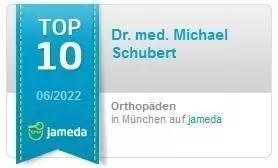Vertebral collapses or fractures
Basically, a distinction must be made between two different causes of vertebral body fractures. On the one hand there are the pathological fractures, e.g. in osteoporosis or in the case of tumorous infestation or diseases. On the other hand, vertebral body fractures caused by trauma (fall, accident, external force).
The most common cause is a vertebral fracture in older people (mostly women) due to osteoporosis. The symptoms can be localized and, more rarely, radiate pain.
In addition to a detailed anamnesis and physical examination, imaging with X-rays (if necessary also in function) as well as a CT or MRI of the affected section are essential for therapy (conservative or surgical).
Here, the extent of the fracture is assessed, among other things, stable or unstable fracture.
- A stable fracture without involvement of the rear edge of the vertebral body or the so-called posterior column is primarily treated conservatively with additional pain therapy.
- Unstable fractures, on the other hand, require surgical treatment, usually a stabilization or stiffening operation; balloon kyphoplasty (insertion of bone cement to stabilize the fractured bone) is also occasionally possible
The aim of any therapy is to restore freedom from pain and normal mobility and stability of the spine.
Vertebral collapse in osteoporosis
is one of the most common complications. Vertebral body collapses can be very painful and cannot be adequately treated in the conventional (conservative) way. Balloon kyphoplasty has been established for many years as a treatment for primarily osteoporotic collapses in the vertebral body. Here the collapsed vertebral body is straightened and stabilized with viscous bone cement. Simultaneous stabilization with screws and rods is usually not necessary. A major advantage of this minimally invasive method is that the patient quickly regains freedom from pain and mobility.
Some patients with an osteoporotic fracture of the vertebral body still have to undergo lengthy conservative therapy (corset fittings, pain medication, immobilisation), which in turn promotes progressive osteoporosis.
In the APEX SPINE CENTER, this procedure is carried out regularly under the most modern precautions.
Vertebral collapses due to trauma – accidental fractures
Here, too, depending on the extent of the fracture, treatment can be carried out in a similar way to the fracture caused by osteoporosis. However, if the fracture is unstable, a stabilizing operation is essential.


